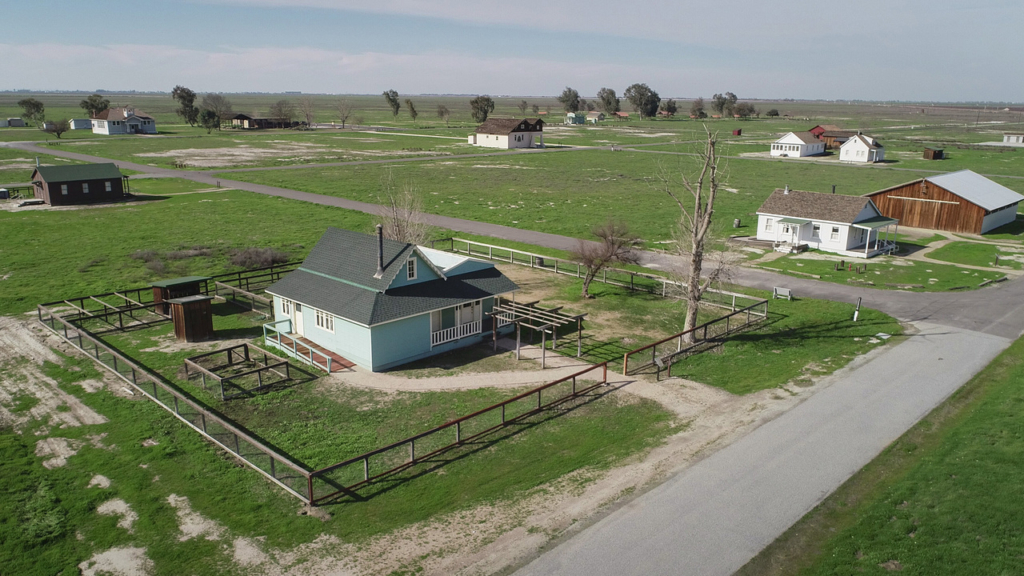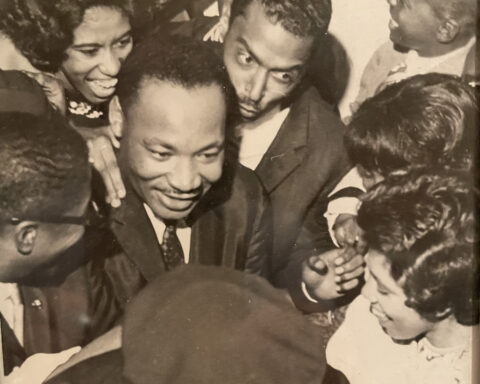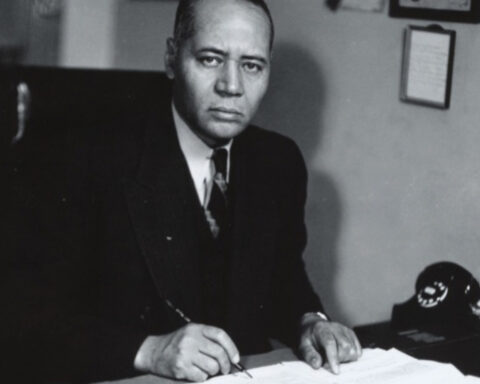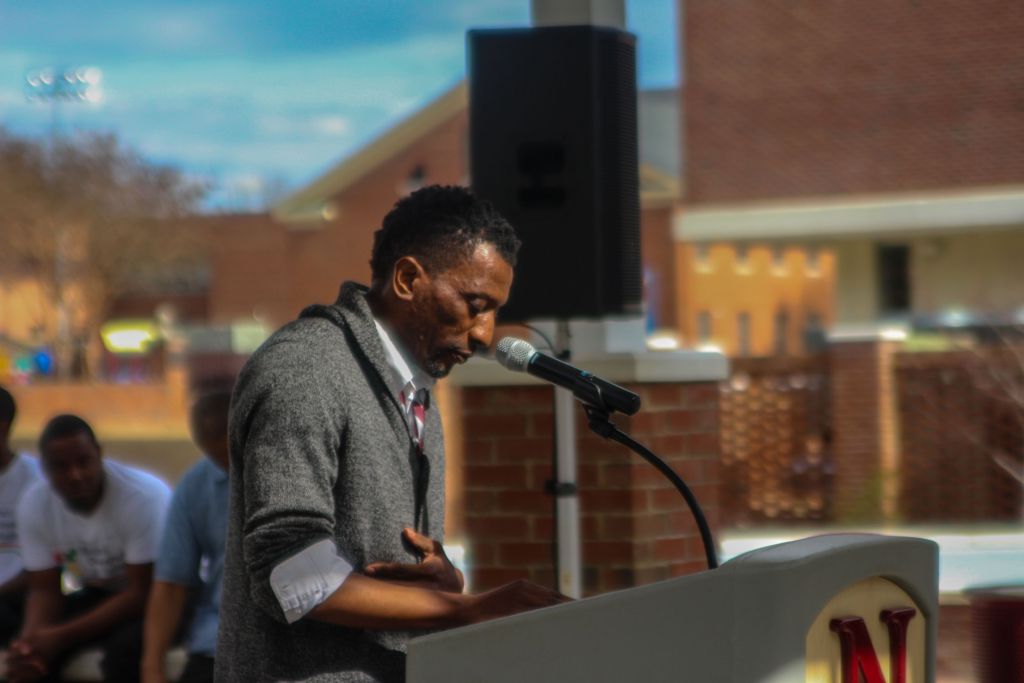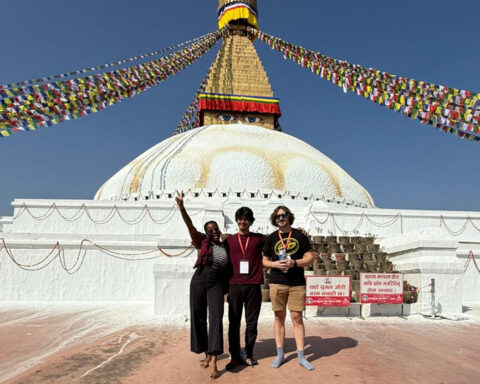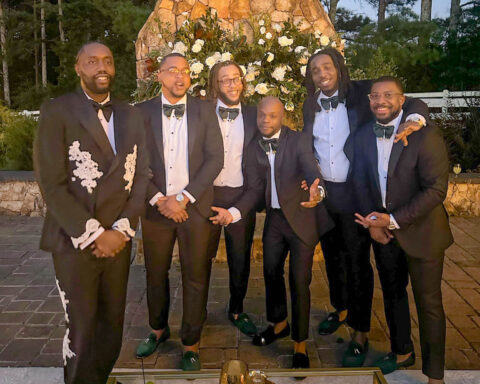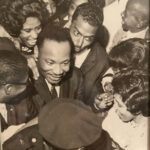Docent Emmett Harden jokes on a recent winter day about many visitors viewing Colonel Allensworth State Historic Park as a “weed patch” in the rural southern San Joaquin Valley. But step inside the park’s buildings, he says, and you’ll get another story.
This town—the only one in California founded, financed, built and governed by African Americans—didn’t simply survive, it thrived, at its pinnacle in the early part of the 20th century.
Education was a cornerstone of the colony, as was music. Pianos and other instruments graced the interiors of many buildings here.
Many of the instruments were brought to the town from the Singleton family, who ran a store and post office. One family member was a band and orchestra conductor before making the journey from Kansas in hopes of finding a home free from segregation and racism. They found a haven in Allensworth, founded in 1908 by the accomplished Lt. Col. Allen Allensworth, a former slave, and a group of his friends near present-day Earlimart.
It was a thriving town for a number of years until three things crippled it. Its charismatic leader, the colonel, died in 1914; a Santa Fe Railway stopover point on the edge of Allensworth was moved to a nearby town; and its water supply dwindled and was diverted.
Penny Singleton Eldridge, 73, describes the water shortage by reading from a letter written by her father, Henry, who came to the town in 1910 as a child. Henry lived in Allensworth during its peak, when there were around 300 residents.
Henry wrote about how as more wells ran dry, canal waters were provided for other predominately-white towns nearby, “but the poverty of Allensworth made this impossible.”
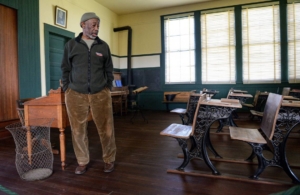
Friends of Allensworth docent Emmett Harden in the classroom of the original Allensworth schoolhouse built in 1912 at Colonel Allensworth State Historic Park near Earlimart, Calif., on February 7, 2019. (Craig Kohlruss/Fresno Bee/TNS)
“The black dream of colonization was over,” he wrote. “Many gave up and moved away.”
But the town was never completely forsaken. Waves of migrant farm workers called it home over the years, including a family member of park docent Harden.
Harden’s father-in-law, Cornelius “Ed” Pope, lived in the colonel’s old house in the 1930s when he was a child. That experience motivated Pope later in life to push for the town’s preservation as a state park, which became a reality in the 1970s.
Harden is now devoted to teaching the park’s history and looking after the place. The historic town preserved by the park is different from the adjacent tiny town of present-day Allensworth.
“For me, I was given an opportunity,” Harden said, “by fate of the ancestors or the gods, to be in a position to leave a legacy for my grandkids and my kids.”
For him, Allensworth remains as a symbol “to prove to the world that we as black folks could live successfully and economically and intellectually, and have the right of self-representation.”
Steven Ptomey, chief of interpretation for the Tehachapi District of California State Parks, said Allensworth was the only town of its kind in the country.
“There were many black towns, but this was a township in that it had its own voting district, its own justice of the peace – it was a complete township, even though it was not incorporated,” Ptomey said, “and that’s unique, very unique.”
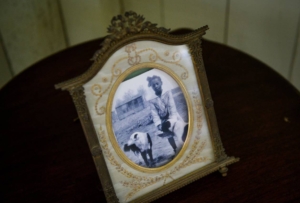
A photo of Allensworth resident Irene Phillips with a couple of dogs sits on a table in a home at Colonel Allensworth State Historic Park near Earlimart, Calif., on February 7, 2019. (Craig Kohlruss/Fresno Bee/TNS)
Ptomey, a former combat medic and archeologist, is friendly and knowledgeable. He’s fascinated by the town’s history and tells stories about its former residents with so much enthusiasm they seem like friends and neighbors.
He frequently works with Harden and Sasha Biscoe, president of Friends of Allensworth, the group that provides the park’s volunteer docents.
It’s a positive partnership but strained at times. None of the park’s small interpretive staff are black. Many of the volunteer docents are. The volunteers bring a different perspective and intimate understanding to the history they are teaching.
Biscoe talks about the segregation of Jim Crow laws in the South that inspired many of Allensworth’s residents to come to California. But the racism they fled from following the Civil War was in the Golden State, too.
“California didn’t have Jim Crow laws, per say,” Ptomey said. “All California’s race laws were based on the Chinese. A lot of anti-Chinese laws. But they had a sneakier way of doing it (to African Americans) … They would use covenants and deeds and they would say in your deed, when you bought a piece of property, you couldn’t sell it to a person of color. … Just as bad, just as insidious and just as unfair.
“But California has this kind of duality in this time period in history, because they had a law that said segregated schools are illegal, yet they allowed these deeds and covenants to go forward. So it’s always been this kind of split personality in California historically about its relations with African Americans.”
While Allensworth didn’t survive as a colony, Ptomey asks if it really was a failure. People are still talking about the town a hundred years later, he says, and that legacy is a success.
Harden said Allensworth was supposed to be a “road map” for African Americans.
“This place will be here as a reminder of who we are as black folks,” Harden said, “and what we can become.”
Story by Carmen George
The Fresno Bee (Tribune News Service)

